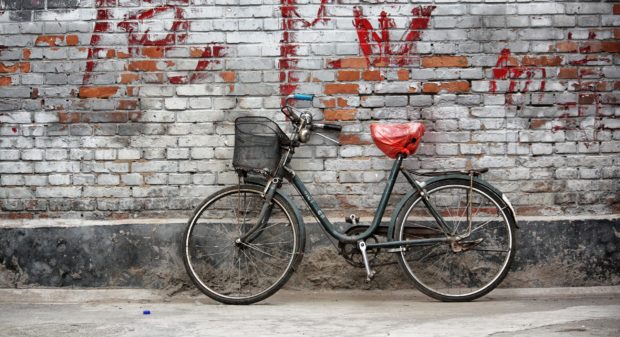
China and bikes: Why the country is enjoying a two-wheeled resurgence
Katie Melua sang about “Nine million bicycles in Beijing” – whether or not that is true, even in the age of motorised vehicles the bicycle in China is still an extremely popular mode of transport.
by Scot TaresThe Chinese people were first introduced to bicycles in the late 19th Century when two American cycling pioneers visited the country in the middle of a round-the-world cycling trip.
It was June 1890 when William Sachtleben and Thomas Allen Jr embarked on their 29,000km trans-continental journey. Travelling first to Liverpool by steamer, they continued through Europe before they spent the winter in Greece. In March 1891 they travelled to Constantinople and then pedalled through the heart of Turkey.
By August they had reached Tehran, from where they continued on through Russia and then crossed the Gobi Desert into China.

Their journey ended as they arrived in San Francisco in 1892. One American journalist proclaimed them as the “greatest travellers since Marco Polo”.
As Sachteren and Allen travelled through China, the population would have been as curious about the foreign faces as they would have been about the strange contraptions they were riding.
Even as the years progressed into the 20th Century, the average price of a bike was the equivalent of about two months’ wages for the average working person.
It wasn’t until China’s first Five Year Plan (1953-1957) that the bicycle industry really took off. By 1958 the country was producing over one million bikes per year and by the time of the Cultural Revolution in May 1966 the bicycle industry was massive.
That surge was crested by Flying Pigeon bikes. The first Flying Pigeon Bicycle Company was officially sanctioned by Chairman Mao in 1949 and they produced their first bike on July 5th 1950.
The bike was the design of a worker at the factory, Huo Baoji who based his design on the 1932 Raleigh Roadster.
The name of the company and the bike was chosen as an expression of peace amidst the war in Korea. Since then it has become not only the most popular bike ever produced, but the most popular vehicle ever with over 500 million units being produced.
The Flying Pigeon bicycle quickly became emblematic of the Communist regime in China and a symbol of social status and pride. When Dang Xiaoping came into power after the death of Chairman Mao he defined prosperity as having a “Flying Pigeon in every household”.
In the mid-1990s, amid rising incomes and rapid urbanisation, the Chinese government threw its weight behind the automobile industry.
This inevitably led to horrendous congestion and pollution and made the Chinese government to reconsider their choices and set a goal in its current Five Year Plan to increase commuting by bicycle from 14% to 18%.
Coupled with an increase in bike share and bike hire schemes it seems that there may be a resurgence of bicycles in China.
However, there are those who are against the idea of a bike revival. It seems that the quickly developing economy in China is leading a large number of millennials to head down the path of worshipping money, cars and houses.
On a Chinese dating show a contestant once told her penniless suitor that she “would rather cry in the back of a BMW than smile on a bicycle”.
If Beijing is to see nine million bicycles on its streets again, it may have to witness another cultural revolution.
Cycling miscellany
In 1860 France’s Vélocipède Illustré magazine published hugely popular stories of Johnathon Schopp, an American who was attempting to circumnavigate the world on a state-of-the-art velocipede.
It turned out that the character was a fictionalised account created by the magazine’s editor Richard Lesclide.

Help support quality local journalism … become a digital subscriber to The Courier
For as little as £5.99 a month you can access all of our content, including Premium articles.